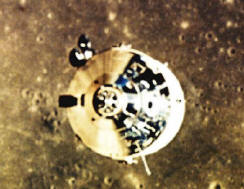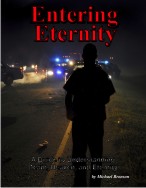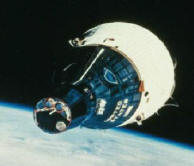






| Website Stats |
Visits from over |
|
Free downloads |
You can now read the material from this website on most electronic devices: -On your computer
Two NEW books from the author of BibleHelp
Click to view the other 7 books
|
Calculator v slide-rule
Back

Chapter: 7.09
(Section 7: The Incredible Power of Prayer)
Copyright © Michael Bronson 1997, 1999, and 2000
BibleHelp.org
Summary
Many of those who are without the gospel are not only separated geographically from the gospel, but are separated linguistically. Language barriers are difficult and time consuming to bridge. This chapter presents some possible solutions.
Click Here for a book version of this material
"Houston, we have a problem." Commander Lovell said as his Apollo 13 spacecraft tumbled out of control over 200,000 miles from Earth. Those infamous words were the start of an odyssey that caught the world’s attention. What almost became the worst tragedy in NASA’s history became NASA’s greatest achievement. In many ways, returning the astronauts back to earth alive was more of a technological challenge than landing a man on the moon.
As most of you know, a ruptured oxygen tank severely crippled the spacecraft. There was not enough oxygen, power, electricity, and heat to get them back alive. It seemed totally hopeless. What made matters worse was that several times while ground control was struggling to resolve one problem, another problem would raise its ugly head. Sometimes a life-threatening problem would have to be resolved in minutes. I found it interesting when dozens of engineers pulled out their slide rules and made frantic calculations to plot new solutions. The computers and calculators we take for granted today were not available then. Calculations we can now do in seconds, took hours and even days back then. I’m intrigued at the idea of what Einstein could have developed if he had a simple pocket calculator, let alone a Cray supercomputer.
|
Technological advancements have helped many aspect of missionary work. Airplanes and helicopters have greatly reduced the time it takes to travel to remote areas. Radios and satellites play a vital, new role in communications. Yet, there are still two areas in mission work that remind me of the old, slow slide rule. The first is a Bible translation and the second is language learning. Of course, computers have helped these areas by replacing the cumbersome index cards with a quick retrieval system. What I am talking about, however, is computer systems that can do some of the actually translation and language learning work.
They are a Phonetic Recognition System (PRS) and a Computerized Bible Translator (CBT). I started working on and praying for these projects around 1980. I have written this chapter to ask you to pray for two special projects that would greatly enhance missionary work, especially in areas which are language intensive. Without going into the technical details, I will try to give you a brief overview of each project.
The PRS is a tool that would help the language learner see what is being spoken. Although it could be created as a stand-alone unit, the most practical and inexpensive approach would be to develop it as software that would work in a Windows® based environment. Basically, the user would speak into the microphone and the computer screen would display the phonetic sounds using the International Phonetic Symbol set. It would also be able to show tone, intonation, stress and time duration. The user would be able to adjust the amount of details displayed on the screen as the situation warranted.
This would help a new missionary learn a foreign national language, such as Spanish. The missionary would practice individual words (or phrases) and then compare what he said with what should have been said. He could then modify his speech until his sounds match the information on the screen. Being able to see what is actually spoken, the missionary could work on those troublesome "American" consonants and vowels that make the missionary sound like a foreigner.
The PRS could also be used in learning unknown tribal languages. A native would speak into the microphone, thus allowing the missionary to see what is being said. This would be extremely helpful in identifying those sounds which foreigners do not normally hear or speak. The PRS would also be able to store what was displayed on the screen (along with the actual sounds) for future review.
The PRS would utilize some of the technology currently used in speech recognition. Speech recognition is where you speak into a device and it will carry out your command, such as turning a light on or off. The main difference is the PRS would not try to figure out the intent of the sound, such as the command, "lights on." Rather, the PRS would only display the building block sounds used in speech.
As I mentioned earlier, I’ve been working on this since 1980. I’ve contacted dozens of corporations trying to raise some interest. I’ve even talked to the Vice President of Intel (the maker of the Pentium® computer chip). Recently, I talked to the former head of the Language Research Department at IBM. He said if I had told him about my dream of a PRS a couple years ago, he would have said it was a pipe dream. However, he said that recent advancements in technology now make the concept a possibility. He cautioned that creating such a system would still be a difficult challenge, but it is now possible.
This is the reason I am soliciting your prayers. I don’t have the technology to produce such a product. Please ask God to put a burden on someone’s heart to carry it on to the next step.
Another application of this technology is to help deaf people learn to speak. Basically, the deaf person would start out by trying to make the basic vowel sounds. Although he cannot hear the sound, he could see it. After he compares his sound to the desired sound, a manual, or help screen, would show him how to alter his mouth to go from his current sound to the desired sound. After the vowels are mastered, he could work on consonants. Next, he would work on simple words, and eventually long complicated phrases.
The Computerized Bible Translator (CBT) is software that would do the original raw translation of the Bible. Currently, translating the whole Bible is a difficult, time-consuming process that takes many years to complete. The task is so time-consuming and missionaries are so scarce, most languages have very little, if any, of the Bible. Currently, out of 6,528 languages only 276 languages have the whole Bible and only 676 have the New Testament.
In recent years, computers have been utilized for Bible translation work. They serve as a database of words, concepts and grammatical structures. They also have been used as word processors, greatly reducing the time needed for editing.
There is, however, much more that the computer can do to assist in the translation process. The computer could do the first draft translation, which is incredibly time-consuming. This would free the missionary to spend more time on the final stages of the translation work.
Just like the PRS, the CBT is an extremely complex project. I know enough about translation work to appreciate the complexities and profound challenges the Bible translators are facing. Attending New Tribes Missions' Language school is what first made me interested in finding some solutions to the translation process. Although the explanation of how the CBT works appears simplistic, please realize I have taken into consideration many factors that will not be discussed.
There are five major components to the CBT: 1) Source text (Bible), 2) Vocabulary list, 3) Grammatical structure of the language, 4) Modified coding, 5) Translator engine. The definitions of these are listed at the end of this chapter.
Anyone who has learned a foreign language or has done translation works knows there is no such thing as a word for word translation process. Sometimes one English word needs to be translated into 5 Spanish words, or vise versa. Sometimes the tribal language does not have an equivalent word, such as the word "snow." Other times the tribal language would phrase things differently, such as saying, "belly of the mountain" instead of "foot of the mountain." There are many other problems besides these that must be addressed.
To address these issues, the missionary would do the translation work in four phases. They are the structure phase, the fine-tune phase, the printing phase, and polishing phase. The structure phase is where the missionary fills out a survey and from this a vocabulary list and grammatical structure is created. This information is then fed into the computer.
The fine-tune phase is where the program is modified to accommodate all of the exceptions to the rules and awkward wording. For example, the CBT translates a chapter, such as the first chapter of John. The missionary reviews this chapter with his native interpreter. They identify the spots where the translation process created awkward or inaccurate text. The modifications are entered into the computer and the chapter is printed again along with a new chapter. The missionary and native again review these chapters. This process is repeated over and over until the missionary feels most of the rough spots have been worked out.
The printing phase is where the CBT prints out multiple books at a time. Besides creating a paper copy, the CBT also creates a text file that can be used in a word processor. The polishing phase is where the missionary and native review the manuscript and polish it. This will be a manual process.
After the manuscript is complete, the text files can be sent to a publisher for printing. I don’t think technology will ever be advanced enough to create a polished manuscript of the Bible from scratch. It may eventually be advanced enough to translate a normal book, but to ensure the integrity of the Bible, manual fine-tuning will always be necessary.
The rapid growth of international communication on the Internet has produced some advancements in this field. There are now some companies that have already created software, such as Web Translator by Globalink, to translate German text to English and vise versa. Although this is a step in the right direction, we are still a long way from being able to create a translation of the Bible into a remote tribal language.
As with the PRS, the CBT project is too complex for me to complete on my own. Please pray God will raise up others to carry on with this project.
Definitions of terms:
Source text The text Bible would need to be converted into raw grammatical code (verbs, nouns, modifiers, etc.). Once this source text is created, it can be used for all languages. Creating the source text would only need to be done once. Many computerized grammar checkers can identify the grammatical components of the text. They could be used in creating this source text. Preferably, however, the people creating this source text should try to refer to the original Greek and Hebrew as often as possible. Vocabulary list The next component is the vocabulary list. This is a list of words for each tribal language. This list is made only once for each language or dialect. This vocabulary list would parallel one originated from the source text. Grammatical structure The third component would be the grammatical structure of the language. This coding tells the computer how to structure the text (where to place nouns, verbs, modifiers, etc.). This coding is created only once for each language. Modifier coding The fourth component is the modifier coding. This coding is used for fine-tuning the translation process. Translator engine The final component is the translator engine. This is the heart of the program that takes all of the components and creates a master document. Once the translator engine has been built (programmed), it can be used for any language. |
Other Chapters in this Section
Home
Is it even Biblical to Pray for a Person’s Salvation?
Tell a Friend about this page


